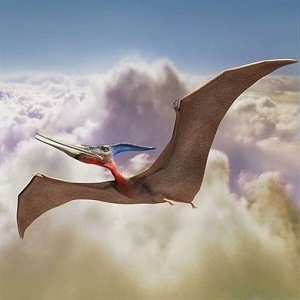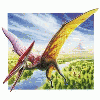
Pteranodon
CBUB Wins: 0
CBUB Losses: 1
CBUB Ties: 0
Win Percentage: 0%
Added by: Mercenaryblade
Read more about Pteranodon at: Wikipedia
Official Site: Public domain
Pteranodon ( ; from Greek πτερ- "wing" and αν-οδων "toothless") is a genus of pterosaur which included some of the largest known flying reptile, with wingspans over . It existed during the late Cretaceous geological period of North America in present day Kansas, Alabama, Nebraska, Wyoming, and South Dakota. More fossil specimens of Pteranodon have been found than any other pterosaur, with about 1,200 specimens known to science, many of them well preserved with nearly complete skulls and articulated skeletons. It was an important part of the animal community in the Western Interior Seaway.
Pteranodon was a reptile, but not a dinosaur. By definition, all dinosaurs belong to the groups Saurischia and Ornithischia, which exclude pterosaurs. Nevertheless, Pteranodon is frequently featured in dinosaur books and is strongly associated with dinosaurs by the general public.
Pteranodon species are extremely well represented in the fossil record, allowing for detailed descriptions of their anatomy and analysis of their life history. Over 1,000 specimens have been identified, though less than half are complete enough to give researchers good information on the anatomy of the animal. Still, this is more fossil material than is known for any other pterosaur, and it includes both male and female specimens of various age groups and, possibly, species.
Adult Pteranodon specimens from the two major species can be divided into two distinct size classes. The smaller class of specimens have small, rounded head crests and very wide pelvic canals, even wider than those of the much larger size class. The size of the pelvic canal probably allowed the laying of eggs, indicating that these smaller adults are females. The larger size class, representing male individuals, have narrow hips and very large crests, which were probably for display.
Images with a green border may be set as the character's main profile image (For images 200x200 or 300x300 pixels square).
CBUB Match Record:
| Result | Opponent | My Score | Their Score | |
|---|---|---|---|---|
| Loss | Griff (Gargoyles) | 1 | to | 7 |
No Fantasy Draft Records Available

